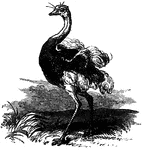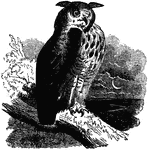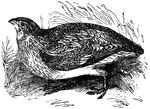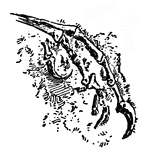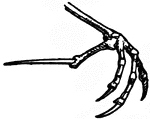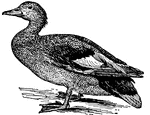
Gadwall Duck
The Gadwall (Chaulelasmus streperus) is a widely distributed duck, appearing throughout Europe and N.…

Bill of Gadwall
The bill of the Gadwall Duck, showing the comb-like 'teeth' that they are known for.
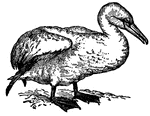
Gannet
Also known as a Solan Goose (Sula bassana), the Gannet is a large marine bird which nests in scattered…
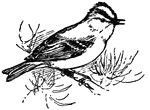
Golden-Crested Wren
Also known as the Kinglet, the Golden-Crested Wren (Regulus cristatus) is the smallest of European birds.…
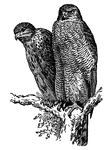
Goshawk
The Goshawk (Astur palumbarius) is a hawk abundant in the forest regions of northern Europe and Canada,…
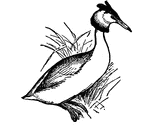
Great Crested Grebe
The Great Crested Grebe (Lophæthyia cristata) is a fresh-water, migratory, diving bird of the family…
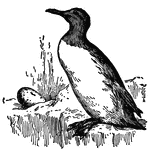
Common Guillemot
The Common Guillemot (Uria troile) is a member of the auk family. It breeds on all rocky coasts of the…
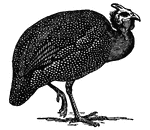
Guinea Fowl
Guinea Fowl are the African representatives of the pheasants, from which they differ in that the plumage…
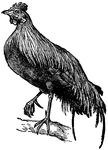
Jungle-fowl
Jungle-fowl is a general name given to the members of the genus Gallus. The red jungle-fowl, G. jerrugineus,…
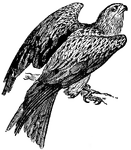
European Kite
European Kites are very miscellaneous feeders, but depend largely on offal, and in the eastern tropics…
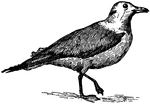
Kittiwake Gull
The Kittiwake gull (Rissa tridactyla) is a sea-gull characterized by the absence of the hind toe. It…
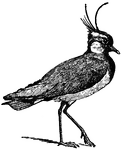
Lapwing (or Peewit)
A handsome plover-like bird of Northern Europe and Asia (Vanellus cristatus), also known in Great Britain…

Common Skylark
The common skylark is a small bird of the passerine family Alaudidae. In all larks, the first toe has…
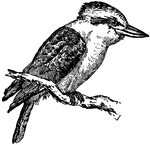
Kingfisher, Dacelo gigas
The Settler's Clock ('Dacelo gigs'), is a very large kingfisher found in Australia, where it receives…

Human Leg (Front View), and Comparative Diagrams showing Modifications of the Leg
This illustration shows a human leg (front view), and comparative diagrams showing modifications of…

Leg of Bird
This illustration shows the leg of a bird. P. Pelvis, FE. Femur, TI. Tibia, FI. Fibula, TA. Tarsus,…

Heron
A great blue heron, commonly found in tropical areas like Florida. They belong to the order Grallatores,…
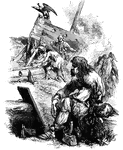
Ship Wreck
A ship wreck with men trying to repair or salvage parts. One man rests on a rock, staring at a panel.…
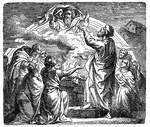
Noah Gives Thanks after the Flood
"And Noah builded an altar unto Jehovah, and took of every clean beast, and of every clean bird, and…
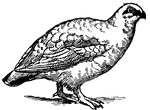
Rock Ptarmigan Winter Plumage
The winter plumage of a Ptarmigan, a grouse of the genus Lagopus. Usually a light reddish brown tint,…
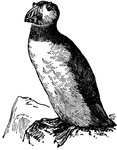
Common Arctic Puffin
Puffins are a bird genus of the auk family, characterized by the great development of the beak. In habits,…

Greek War-Ship with Three Rows of Oars
Illustration of a Greek war-ship from the 5th century BC. There are two masts, a large decorative bird…

The Creation of the World - Adam and Eve, Animals, Plants,
"In the beginning God created the heavens and the earth." Genesis 1:1 ASV Illustration of God sitting…
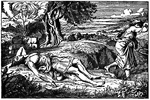
Cain and Abel- Cain Runs Away as Abel Lies Dead on the Ground
"...And it came to pass, when they were in the field, that Cain rose up against Abel his brother, and…
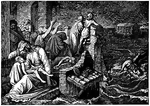
The Deluge - Noah's Ark Floats into the Rising Flood Waters as People Trapped on Land Watch in Horror
"And every living thing was destroyed that was upon the face of the ground, both man, and cattle, and…

The Parable of the Sower - Birds Eat the Seed by the Wayside
"And he spake to them many things in parables, saying, Behold, the sower went forth to sow; and as he…
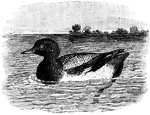
Scaup, a Common Duck
"A duck, Fuligula or Fulix marila and related species. The common scaup inhabits Europe, Asia, and North…

A Black Scoter Swimming
Melanitta americana or Œdemia nigra A large sea-duck of the genus CEdemia, belonging to the subfamily…
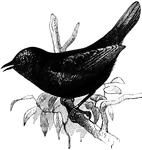
Magellanic Tapaculo
Scytalopus magellanicus. "A genus of South American formicarioid passerine birds, of the family Pteroptochidae.…

Burying Beetles, Burying a Dead Bird
Also called Sexton Beetles, these beetles bury the carcasses of small vertebrates as food for their…
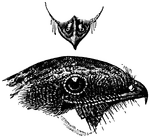
Nightjar Profile and Tubular Nostrils
Siphonorhis americana. "A genus of American Caprimulgidae or goatsuckers, having tubular nostrils. The…
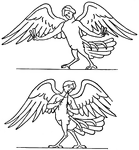
Sirens on a Greek Funeral Marble
"In Greek mythology, one of two, or three, or an indeterminate number of sea-nymphs who by their singing…
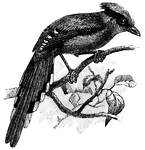
Sirgang
"The so-called green jackdaw of Asia, Cissa sinensis. The sirgang inhabits the southeastern Himalayan…
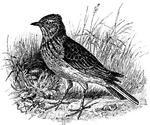
Skylark
"The common lark of Europe, Alauda arvensis: so called because it mounts toward the sky and sings as…
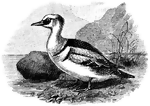
Smew - A Merganser or Fishing Duck
Mergellus albellus. "A small merganser or fishing duck...The male in adult plumage is a very beautiful…
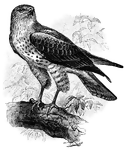
Snake Buzzard, Also Called a Short-Toed Eagle
Circaetus gallicus is a "bird of prey inhabiting all the countries bordering the Mediterranean, and…
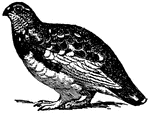
Rock Ptarmigan Summer Plumage
The winter plumage of a Ptarmigan, a grouse of the genus Lagopus. Usually a light reddish brown tint,…
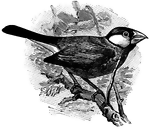
Java Sparrow on a Branch
Padda oryzivora. "...the rice bird of Java...about as large as the bobolink, of a bluish-gray color…
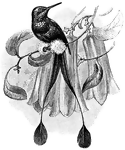
Racket-Tailed Hummingbird
Spathura underwoodi. The Spathura is a "remarkable genus of Trochilidae, containing hummingbirds with…
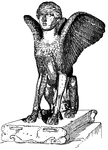
Sphinx of Lanuvium
A Graeco-Roman marble table support in the shape of a sphinx. It was found in the ruins of the Villa…

Streaked Spiderhunter
Arachnothera magna. Also called a spider-catcher, the Streaked Spiderhunter is "a bird that catches…


